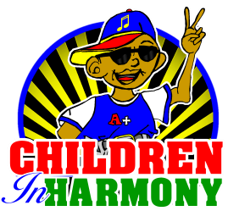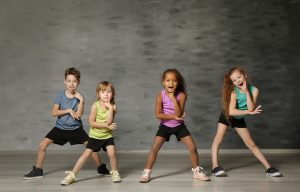The role of the arts in a child’s development is often underestimated, especially when it
comes to academic growth. Yet, research consistently shows that exposure to the
arts—whether through music, dance, theater, or visual arts—plays a crucial role in
enhancing children’s intellectual and emotional development. The arts don’t just enrich a
child’s creativity but also contribute to improved academic performance. Let’s dive into how
engaging in the arts can give children a significant academic boost.
1. Enhancing Cognitive Skills
The arts stimulate cognitive development in ways that traditional academic subjects
sometimes cannot. Whether it’s learning how to play a musical instrument, acting in a play,
or painting, these activities require children to use both the creative and analytical sides of
their brain. This dual engagement enhances cognitive flexibility, improving skills like
problem-solving, critical thinking, and spatial awareness.
For example, learning to play music involves understanding rhythms, patterns, and even
mathematics. Students engaged in arts education often perform better in areas such as
reading comprehension, math, and science.
2. Promoting Creativity and Imagination
The arts naturally foster creativity. In an academic context, creativity isn’t limited to drawing
or painting but extends to innovative thinking and problem-solving. When children engage in
artistic activities, they learn to think outside the box and approach problems from different
perspectives.
This creative thinking helps in subjects like math and science, where students must find new
ways to approach complex problems. Encouraging imagination also promotes a love for
learning, as children learn to connect their artistic experiences with academic concepts.
3. Building Communication Skills
The arts—whether theater, dance, or visual arts—enhance communication skills. When
children participate in group activities like acting or music ensembles, they learn to
collaborate, listen actively, and express their ideas clearly. This contributes to their ability to
articulate thoughts and feelings, which is critical in subjects like writing and reading
comprehension.
In theater, for example, students not only learn how to interpret characters but also gain
insight into emotional intelligence, empathy, and effective communication—all of which are
invaluable in academic settings.
4. Boosting Memory and Concentration
Engaging in the arts helps improve memory and focus. When children learn a piece of
music, memorize lines for a play, or create a visual art piece, they are exercising their
memory muscles. This repetitive practice can improve their ability to retain and recall
information across subjects.
Research has shown that music training, in particular, enhances verbal memory, spatial
reasoning, and literacy skills. The attention to detail and concentration required in artistic
activities translates into better academic performance, particularly in reading and
mathematics.
5. Encouraging Emotional Expression and Empathy
The arts offer children a safe space to express emotions, understand different perspectives,
and empathize with others. Emotional intelligence plays a huge role in academic success,
especially in the ability to work well with peers and engage thoughtfully with challenging
material.
By acting in plays, dancing, or creating art, children gain insight into human emotions and
experiences, helping them develop empathy and social awareness. These skills contribute to
improved classroom behavior and better cooperation, creating a more conducive
environment for academic learning.
6. Improving Fine Motor Skills
For younger children, activities like drawing, painting, and playing instruments significantly
improve fine motor skills. The precision required in these activities helps children develop
hand-eye coordination and muscle control. These skills are foundational to tasks such as
writing, typing, and using educational tools, which are essential in early academic growth.
7. Fostering Discipline and Perseverance
Artistic pursuits require patience, discipline, and perseverance—all traits that directly impact
academic success. Learning a new skill in the arts, such as mastering a musical instrument
or completing a detailed painting, teaches children the value of practice, hard work, and
resilience.
When children experience the satisfaction of completing an artistic project, they carry that
sense of achievement into their academic work. This improved self-discipline leads to better
study habits, time management, and persistence when faced with academic challenges.
8. Supporting Cross-Curricular Learning
The arts often incorporate themes and topics from various academic subjects, offering a
holistic learning experience. For instance, a dance routine might include mathematical
patterns, or a painting might explore themes from history. This interdisciplinary approach
helps children make meaningful connections between the arts and other subjects, enhancing
their overall understanding and retention of academic material.
9. Developing Self-Confidence
Participating in the arts helps children build self-confidence. Whether it’s performing in front
of an audience or displaying a piece of art, these experiences boost a child’s sense of
self-worth. A confident child is more likely to participate actively in class discussions, take
risks in learning, and embrace new academic challenges.
10. Cultivating Cultural Awareness and Appreciation
The arts expose children to various cultures, histories, and perspectives. Through music,
theater, and visual arts, students learn about different cultural traditions, promoting an
appreciation for diversity and global awareness. This expanded worldview enriches their
academic learning, particularly in subjects like history, literature, and social studies.
Conclusion: The Arts as a Foundation for Academic Growth
The impact of the arts on academic growth goes far beyond improving test scores. The arts
foster creativity, critical thinking, communication, and emotional intelligence—all essential
skills for lifelong learning. By encouraging children to engage in music, dance, theater, and
visual arts, parents and educators provide them with tools that enhance not only their
academic performance but also their overall development.
FAQ's
How do the arts improve memory and concentration in kids?
The arts engage multiple areas of the brain, especially in activities like music and theater,
where children must memorize lines or sequences. This strengthens memory retention and
improves focus.
Can the arts really help with subjects like math and science?
Yes, the arts enhance critical thinking and problem-solving skills, which are fundamental in
subjects like math and science. Music, for example, helps with pattern recognition and
spatial reasoning.
What types of arts are most beneficial for academic growth?
All forms of art—music, dance, visual arts, and theater—contribute to academic growth by
developing different skills such as creativity, communication, and emotional intelligence.
How can teachers incorporate arts into traditional subjects?
Teachers can integrate arts into lessons by using creative projects, such as music in math to
explore patterns or art in history to discuss cultural movements, fostering cross-curricular
connections.
At what age should children start engaging in the arts?
Children can start engaging in the arts as early as preschool. Early exposure helps with
cognitive and emotional development, laying the groundwork for academic success.




